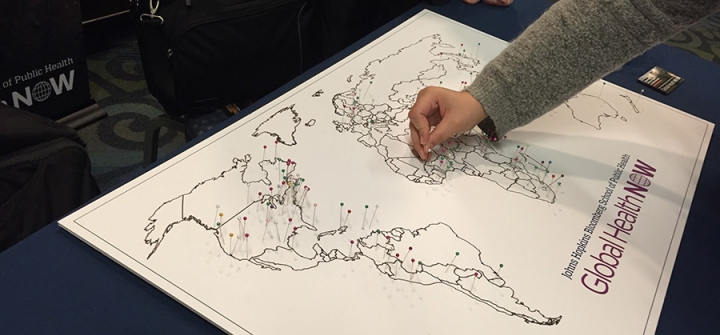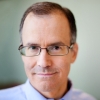#CUGH2017
Global Health NOW is covering the April 7-9, 2017 Consortium of Universities for Global Health conference (#CUGH2017) with news bursts. Below are the key stories from the conference as covered by the GHN team.
Adnan Hyder’s 7 Challenges (Sunday, 4.9.17, 3.34 p.m.)
While noncommunicable diseases are under-recognized and underfunded in the global health agenda, injury and violence are still less appreciated—despite the fact that they account for more than 5 million deaths every year.
In a bid to frame the need for and the issues involved in injury and violence prevention, Adnan A. Hyder, director of the International Injury Research Unit at the Johns Hopkins Bloomberg School of Public Health, described 7 critical challenges in the field during a Sunday morning session at #CUGH2017. According to Hyder:
1: The zero-sum approach of using mortality estimates for different diseases and conditions to set global health priorities puts researchers in competition against each other and must end.
2: Prevention might not be the cheapest strategy but it is the right thing to do.
3: While researchers rejoice when government ministers acknowledge their issue is a problem, “We can’t be happy with acknowledgement alone. We have to go beyond that … into true investment, true dedication and programmatic follow up,” Hyder said.
4: “Pilot-itis” is a deplorable condition in which pilot programs are launched but never taken to scale when successful.
5: Advances in injury prevention are unevenly disseminated globally. Consider: Car seats were developed 55 years ago; smoke alarms 52 years ago; child resistant containers 40 years ago; bike helmets 42 years ago…
6: Many guidelines are not actually implemented or used, said Hyder, offering the example of the WHO’s guidance in trauma care. There is no evidence of implementation in 143 countries.
7: Interventions need to be targeted to the people who need them most, not to the general population.—BWS
Key Lessons in Protecting Women from Violence (Sunday, 4.9.17, 3.08 p.m.)
What can be done to stop violence against women? Actually, a lot. 4 global experts shared their findings and experience with interventions in a variety of global settings during a Sunday morning panel at #CUGH2017.
Lori Heise, Associate Professor, Social Epidemiology, London School of Hygiene & Tropical Medicine
9 community randomized controlled trials have successfully demonstrated reductions in violence against women, Heise said. An example from Uganda: The SASA! community mobilization approach demonstrated a 52% reduction in intimate partner violence (IPV) over 3 years. And in Kenya, the UJAMAA initiative that included self-determination and empowerment training among girls resulted in a 62% reduction in reported rapes, Heise said.
A very different project in Kenya called Give Directly that used unconditional cash transfers led to a 30%-50% reduction in IPV within marriages. Researchers believe that the cash transfers are effective in very poor settings where women “have to negotiate every day to buy food for the day and that is a real flashpoint in terms of conflict,” Heise said.
Heise also noted that applying the infectious disease model analogy to IPV doesn’t work. “It’s not as as simple as alcohol causes IPV,” Heise said. “It’s much like heart disease—it’s a probabilistic outcome where things interact in the social ecology.”
Crista Johnson-Agbakwu, director, Refugee Women’s Health Clinic in Phoenix, Arizona and research assistant professor, Southwest Interdisciplinary Research Center, NIH
“What we see is a trauma of silence. We as health care workers must create a safe space for open dialogue,” said Johnson-Agbakwu of refugee women she serves in the Phoenix area.
With the arrival of 4,000 to 5,000 refugees in the state of Arizona every year, Johnson-Agbakwu saw a need to help women from Somalia, Iraq, Democratic Republic of Congo, Burma and other countries. She employs refugee women themselves as cultural liaisons and medical interpreters to help newer arrivals. “We are locally accessible and globally minded,” Johnson-Agbakwu said.
One standout initiative: To help a growing number of Congolese women who have survived sexual and gender-based violence, her team created a series of videos explaining the US health care system, pregnancy and childbirth.
Ana Baptista, Coordinator, Jhpiego, Mozambique
Baptista described the evolution of a program in Mozambique to help women who are victims of gender-based violence. An estimated 55% of women in the country are subjected to physical/sexual violence in their lifetimes, Baptista said.
Since the program launched, 6000 survivors of violence have been assisted; most were survivors of sexual violence. 91% were women and 9% were men, she said. Lay counselors do HIV testing and gender-based violence screening, she said. 40% of those who say they were a survivor of violence were HIV positive.
Carmen Alvarez, Assistant Professor, Community-Public Health, Johns Hopkins School of Nursing, USA
Alvarez is investigating the use of an app called MyPlan to help Latina women avoid becoming victims of intimate partner violence. Her research began with a study of health care providers and their thoughts on the appropriateness of using the app with this population.
Most of the health care providers surveyed said IPV issues surface at least once per week with their Latina patients. However, it is rarely the presenting problem. Women will say they are feeling anxious or unable to sleep, and IPV comes up only when probed. The providers endorsed the use of the tool because it was nonjudgmental and its greatest benefit would be to help patients realize they are in violent or unhealthy relationships.
Up next for Alvarez: Evaluating the tool with the women themselves.—BWS
Data Update: Violence Against Women (Sunday, 4.9.17, 11.25 a.m.)
Social epidemiologist Lori Heise offered a quick survey of the data on violence against women in a Sunday morning plenary at #CUGH2017.
While it’s known that 1 in 3 women worldwide will be a victim of physical or sexual violence in their lifetimes, what’s less recognized is the great variation in rates within countries and even neighborhood to neighborhood, said Heise, an associate professor at the London School of Hygiene & Tropical Medicine.
While 40% to 50% of women in rural areas of Ethiopia, Peru, Bangladesh report being beaten in the last 12 months, rates in urban areas can be significantly lower, Heise said.
What accounts for the significant variations in rates? The answer is what you expect: The levels of violence are related to gender inequality indicators such as achieved status, gender norms, economic and political participation and rights, etc., she said.
“The bottom line is everything goes in the direction you would expect,” Heise said, adding that the level of authority of men over women’s behahvior is also highly correlated as is ownership rights, inheritance and family law (the ability for women to leave, divorce, etc.)
Interestingly, women in Africa who are employed or who work for cash are at higher risk of experiencing domestic violence. However women in countries with higher proportion of women in workforce experience lower levels of violence, Heise said.
Among other data Heise shared, women who experienced intimate partner violence (IPV) are:
- 2X as likely to experience depression
- Almost 2X as likely to experience alcohol use disorders
- 4.5X more likely to attempt suicide
- 16% more likely to have low birthweight babies
- 1.5X more likely to acquire HIV
—Brian W. Simpson
4 Takeaways from the NIH Global Health Research Panel (Saturday, 4.8.17, 3.45 p.m.)
4 NIH leaders connected the dots between the research their institutes support support and global health during a Saturday afternoon panel at #CUGH2017. Here’s the key takeaways from each speaker.
Anthony S. Fauci, Director, National Institute of Allergy and Infectious Diseases
Established infectious diseases like diarrheal diseases, respiratory diseases, HIV/AIDS are mostly predictable. So, their morbidity and mortality numbers for next year can be reliably predicted. However, emerging and re-emerging infectious diseases are the brand X in global epi forecasts.
In briefing Trump administration officials before the inauguration, Fauci said he warned of the possibility of an emerging infectious disease outbreak in another part of the world that could threaten the US. “Global health is integral to everything we do at [NIAID] and what we are looking forward to in the next 4, 8 and beyond years is a total commitment to address global health issues in a very serious manner,” Fauci said.
Pamela Y. Collins, Director, Office for Research on Disparities & Global Mental Health and Office of Rural Mental Health Research, NIH
Collins cited 3 reasons the mental health community needs to conduct global mental health research: “1) The burden of mental health issues is large and growing. 2) We need to understand etiologies of these disorders to have effective preventive intervention; and 3) We need evidence to improve access to treatment that’s available now and works.”
Douglas R. Lowy, Acting Director, National Cancer Institute
Foundational research connecting HPV to cervical cancer done in Costa Rica and research there into protection afforded by a single dose of the HPV vaccine are key examples of how cancer research in the developing world is key both for the US as well as the rest of the world, Lowy said.
Gary H. Gibbons, Director, National Heart, Lung and Blood Institute
The 20th century saw the transition from infectious diseases to noncommunicable diseases being being the dominant killers in the US by the midcentury. By understanding the etiology of heart disease, it became possible to reduce heart disease deaths by 70% since then. That kind of success needs to be taken globally, Gibbons said. “This is an opportunity to provide global leadership in translational research and implementation science [via] collaborative partnerships, capacity building and next generation of leaders,” he said.—BWS
Untold No More: The 2017 Untold Global Health Contest Winners (Saturday, 4.8.17, 3:02 p.m.)
We have the winners: Unintentional burns in Nepal, submitted by Emaline Laney, and deafness in developing countries, proposed by Christi Batamula and by Matthew Yau, are the Untold Global Health Stories of 2017.
The winning stories of the 2017 Untold Global Health Stories contest, sponsored by CUGH, NPR’s Goats and Soda blog, and Global Health NOW of the Johns Hopkins Bloomberg School of Public Health, will be covered in-depth by journalists. NPR’s Goats and Soda will cover deafness in developing countries, while Global Health NOW will send a journalist to Nepal to cover the story or unintentional burns.
Read the full entries by Emaline Laney, Christi Batamula, and Matthew Yau here. The contest, designed to give a platform to important but underreported global health stories, drew over 200 submissions this year. Stay tuned for more: We’ll announce winners of honorable mentions for the 2017 Untold Global Health Stories within the next week.—DKM
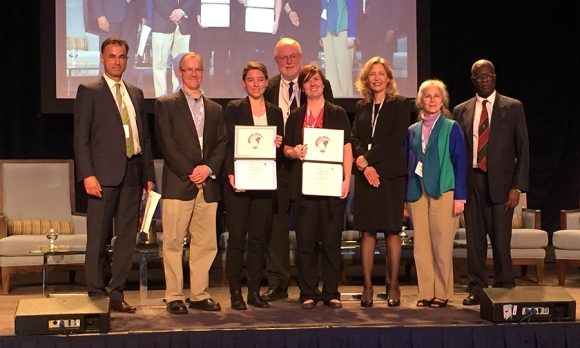
Winners of the 2017 Untold Stories of Global Health Contest (Center: Emaline Laney and Christi Batamula, Phd. Winner Matthew Yau was unable to attend the CUGH meeting.
So You Want Money from the Gates Foundation? (Saturday, 4.8.17, 12.07 p.m.)
If you’d like to have support from the Bill & Melinda Gates Foundation, it might help to know how it works.
Rob Nabors, director of Policy and Government for the Gates Foundation, pulled back the veil on the Foundation’s work for #CUGH2017 attendees during a Saturday morning session.
The Gates Foundation, which allocates about $5 billion per year, has a strategy to invest in research and interventions that, if proven successful, can scaled up by nation-states, Nabors said.
“Part of the reason why we are so focused on evidence is we want to invest in things that work. We want to go to other investors [with] things that clearly have an impact,” he said.
The Foundation “fiercely targets very specific, solvable problems,” Nabors added. The polio vaccination campaign efforts to eliminate the virus is one example. “We view malaria, HIV, and TB through those types of lenses, where can we start to solve problems,” he said.
The annual funding process at the Foundation begins each November when staff brings proposals for funding to the Bill and Melinda Gates. Staffers make the case for funding proposals as part of a strategic planning process, presenting the technologies that can be deployed against the problem as well as evidence of the return on investment. Proposals that get a thumbs up will result in grants.—BWS
A First: Brazilian Wins the Gairdner Award (Saturday, 4.8.17, 10:35 a.m.)
The first Brazilian—and the first scientist who spent his whole life working in the South—won the 2017 John Dirks Canada Gairdner Global Health Award.
Cesar Victora, emeritus professor of the Federal University of Pelotas, Brazil received the honor "for outstanding contributions to maternal and child health and nutrition in low and middle income countries, with particular focus on the impact of exclusive breastfeeding on infant mortality and on the long-term impact of early-life nutrition,” according to Canada’s Gairdner Foundation.
Victora helped set up the 1982 Pelotas Birth Cohort, one of the longest running birth cohort studies in the world, following 6,000 individuals and helping to establish the influence of the first 1,000 days of life on lifelong outcomes, including chronic diseases and human capital. He gave the public health world the first study showing the importance of exclusive breastfeeding for preventing infant mortality, which led to UNICEF and WHO recommendations for mothers to breastfeed their infants exclusively for the first 6 months of life. In his acceptance speech, he highlighted the philosophy underpinning the recent Lancet initiative on breastfeeding, noting that “Breastfeeding is not the sole imperative of women .... and promotion of breastfeeding is a societal imperative.
The award, announced at a CUGH session by Janet Rossant, the Gairdner Foundation’s president and scientific director, recognizes top scientists who have made “seminal discoveries or major scientific advances in any one of four areas of basic science, clinical science, population health or environmental health.” Recipients receive a $100,000 honorarium. If you know someone who has made major scientific advances deserving of this award, Rossant urges you to reach out and nominate them through the Canadian foundation’s “spiffy new website.”
Victora ended his talk with an interesting challenge: Noting that 4 of his Brazilian students left for the North last year, he asked the community to think about ways to halt brain drain from the South. He noted that Northern institutes benefit from the training students receive in Brazil—where advanced education is free, all the way through doctoral level programs.—DKM
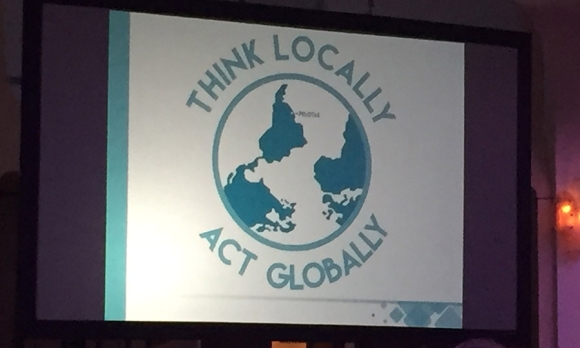
A slide from Cesar Victora's presentation. Note that Pelotas, Brazil is on the top of the world!
Climate Scientist: Think Differently (Saturday, 4.8.17, 10.32 a.m.)
Public health researchers need to be actively collaborating with climate scientists and others in the life sciences to make use of lifesaving data, Juli Trtanj, a NOAA climate and health research leader, told #CUGH2017 attendees at a planetary health session on Saturday morning.
After citing familiar data documenting climate change in the Arctic, global temperature and sea level rise, Trtanj offered specific examples of the interplay of climate and health—and opportunities for public health research collaborations.
An extensive network of global sensors can predict weather cycles like El Niño, which have significant global effects on health. Based on El Niño forecasts, Rift Valley Fever outbreaks can be predicted in Africa based on rainfall and vegetation changes. This should allow health officials time to alert local health departments and preposition response efforts.
Similarly rising sea surface temperatures have led to cholera vibrio bacteria being detected in shellfish in Alaska and causing wound infections among fishermen and others.
Extreme heat has also caused harmful algal blooms in the US Great Lakes and along the US coastlines in the last 5 years, she said.
Trtanj exhorted university public health faculty to think differently about their research and especially to encourage students to make broader connections. Talk to the oceanographer or the biologist in other buildings on campus and undertake joint research, she said.
“We can chart this path together. We can show our children that we may not have saved the world but we were working differently,” Trtanj said. “There are lots of opportunities for collaboration. I hope we started a new path here today.” —BWS
Richard Horton: “We Have 1 Generation to Get This Right” (Saturday, April 8, 2017. 10.05 a.m.)
Every civilization must understand the existential predicaments that threaten them. The ones who don’t succeed end up in museums, Lancet editor-in-chief Richard Horton #CUGH2017 told attendees at a Saturday morning plenary on planetary health.
Our civilization’s existential threats—climate change and gross social and economic inequities—demand the interdisciplinary response of planetary health, Horton argued.
Defined as the “health of human civilizations and the natural systems on which they depend,” planetary health emerged as a key theme for #CUGH17. Key evidence: The open-access Lancet Planetary Health http://www.thelancet.com/journals/lanplh/issue/current
launched its inaugural issue during the CUGH conference.
Somberly yet roguishly attired in black leather jacket and black shirt and pants, Horton emphasized climate change and the urgency of responding to it. “What climate change is about is the fate of civilization. It’s understanding the scale of the change in the way we live our lives,” Horton told an audience of more than 600. “We have 1 generation—20 years—to get this right. If we miss this opportunity over next 20 years, we are in seriously bad trouble, irreversibly bad trouble.”
A cascade of global changes framed by the Paris Climate Agreement is essential, beginning with achieving a peak in carbon emission by 2020, the immediate elimination of carbon fuel subsidies, working actively to the elimination of coal energy production by 2030 and oil’s replacement by renewable energy by 2040. If these goals are reached, the globe will be carbon neutral by 2050, he said.
“It’s no good saving children’s lives in the short term if we kill our planet, not even in the long term but in the mid term,” Horton said.
He characterized the second greatest challenge as economic and social inequity. “Inequity in the United States is going to be the toxic issue that accelerates impact of environmental change,” he said, adding that people in low- and middle-income countries will suffer the effects of climate change and biodiversity loss.
“We do know what we need to do but we have no idea if we will be able to do it,” Horton said. “We have to change way we look ourselves and change the way we work with one another and we have to create unprecedented collaborations.” —BWS
“We’ve Mortgaged Our Future” (Saturday, 4.8.17, 9:45 a.m.)
Planetary health, defined as the health of human civilization and the state of the systems on which we depend, Montira Pongsiri, Science Policy Adviser, Planetary Health Alliance, USA, called for science-based change.
“We’ve mortgaged our future to obtain economic development,” said Pongsiri. “…Unless we dramatically change the way that we currently live and prosper, we risk the health of human civilization.”
Pongsiri described how multiple environmental changes are interacting together to affect health—and said the potential for negative synergistic actions is climbing alongside climate change.
Some effects are direct; the higher temperatures the follow climate change triggers heat stress and related illnesses. Other effects are ecosystem-mediated (effects on crops that undermine our nutritional security, or a rise in the risk of vector-borne diseases, like Lyme Disease).
She emphasized that environmental change can increase inequities, also, putting poor populations whose natural systems are degraded are increasingly at risk. Noting that by 2030 most people will live in cities, she highlighted the use of science-based strategies to address environmental sustainability and human health in context of cities in particular.
That means redesigning (or designing) cities with people in mind to improve unhealthy conditions—such as upping green space to promote physical activity and social interaction, and making urban spaces pedestrian-friendly (which promotes healthy exercise and reduces car crashes).
In a world where resources are limited, she concluded, it makes sense to look for solutions with both environmental and health benefits.—DKM
10 Way to Promote Female Global Health Leaders (Friday, 4.7.17, 4.00 p.m.)
Just in case you’re skeptical that women are under-represented in the ranks of global health leaders, consider that among WHO members states, only 28% of top health officials are female. Only about 15% of medical school deans are female. An all-female panel of leaders at CUGH discussed how to retain and promote female leaders, offering some key suggestions (with great input from the audience!). Here are 10 takeaways:
- Racial and cultural diversity is important too; there is a lack people of color not just in leadership posts but in the pipeline
- Women who become leaders: Don’t pull the ladder up behind you
- Rising women: Shut down the “Imposter Syndrome” that creeps in … say it confidently, not in a question tone
- Mentors (female and male—remember men can be great mentors, too!): Empower rising leaders with strong titles, facilitating respect, redirecting questions their way, etc.
- Consider setting requirements: One dean, searching for international students for training opportunities, specifically said “Give me 50% men and 50% women”
- Women and men: Nominate women for recognition, awards; make sure nominating committees are not male-only
- Conference and panel organizers: Ensure equal representation on panels, or pull the panel (same goes for keynote speakers, medals named for men only, etc.)
- For women leading teams overseas: Be firm, respectful and politely persuasive; demanding equity doesn’t really work
- People hiring women: If they turn down an offer, figure out what the barrier is to a woman accepting a position – help them troubleshoot the logistics
- All of us: Embody a collaborative, rather than competitive, spirit—DKM
Join the conversation on Twitter, too: @womenGHresearch
Why is Mark Dybul Optimistic in This Challenging Moment? (Friday, 4.7.17, 3.55 p.m.)
There are obvious downsides for global health in today’s turbulent economic, social, technological and political times. To survive, the global health community has to do a better job on multiple levels, starting with communications, said Mark Dybul, executive director of the Global Fund for AIDS, Tuberculosis and Malaria during Friday’s Megatrends session at #CUGH2017.
“We don’t position data in ways that policymakers want to look at,” Dybul said at the Friday morning Megatrends session at #CUGH2017. “Problems are all over the place. They want solutions.”
Policymakers find their way into to government because they want to do something important but they don’t often get the chance to do that, he said. “What they are looking for is solutions like how can you end HIV/AIDS, TB, and malaria. That’s pretty exciting to them,” Dybul said.
Dybul recalled Vice President Mike Pence’s recent defense of PEPFAR. Pence cited PEPFAR’s ability to save literally millions of lives and shunted budget cuts away from the popular program.
Also key to moving policymakers is tying global health to national security and economic growth, Dybul said. Global health advocates need to tell policymakers, “If you want to be safe and prosperous, we need health and education,” he said.
The global health case can be made more strongly by bringing in others. He pointed to US Secretary of Defense Jim Mattis as “an excellent advocate for global health development.” Similarly when a CEO meets with heads of state in Africa and elsewhere and emphasizes health, leaders will listen, Dybul said.
“I’m actually more than cautiously optimistic. I think we are in a positon where if we are careful, smart and strategic, we can have tremendous opportunities in this moment of challenge.” —BWS
Meat: Move Over or Make Over (Friday, 4.7.17, 12:30 p.m.)
To feed 9.7 billion by 2050—sustainably—we need to produce food that competes with the most popular foods on taste, price, and convenience, said Bruce Friedrich, executive director of The Good Food Institute.
One way: replace more meat consumption with plant-based proteins. But despite efforts by many companies to offer and advocate for less energy-hogging plant-based protein alternatives to meat, animal product consumption continues to rise. Maybe, Friedrich posited to the CUGH crowd, the solution is to create products that are environmentally more sustainable and appealing to consumers.
He described some innovators in that field, like “clean meat” producers. That’s GFI’s name for lab-grown meat; Friedrich explained they thought that sounded better (good call!); after all, we don’t talk about lab-grown Cheerios or Budweiser, he noted.
Some of benefits of ‘clean meat,” according to Friedrich:
- 99% less land
- 99% less water
- 95% less climate change
- Bypass problems of antibiotics & many food safety concerns
On the merits of tech-based solutions, Friedrich pointed out that back in 1984, when horses on New York City streets dropped 50,000 tons of excrement monthly—leaving the streets drowning in manure, plagued by flies, congestion, carcasses, traffic accident. The world’s first urban planning conference in 1889 broke down over the issue, which they thought was not solvable. Then Henry Ford introduced the Model T, relegating the horse-drawn carriages to tourist attractions.
Friedrich is convinced that technology will ultimately solve the inefficiencies of the meat industry, too. “…We will get to a time in the not-too-distant future, predicted by Eric Schmidt, Bill Gates, Sergey Brin, and others where the idea of growing crops to feed them to animals so that we can eat animals will make about as much sense as any of us walking out of this conference, hopping into a horse-drawn carriage, and heading back to New York City, or San Francisco, or wherever we came from,” he concluded.—Dayna Kerecman Myers
4 Big Global Health Challenges, 4 Solutions (Friday, 4.7.17, 12.06 p.m.)
It was small request. With more than 700 people in the audience and a dozen seconds to prepare, CUGH director Keith Martin asked 4 global health experts to each give 1 big challenge in health and 1 big solution for it. Here’s how they responded:
Victor Dzau, President, National Academy of Medicine
Antimicrobial resistance is a critical issue right now that’s unresolved in part because of a failure of the market to come up with solutions.
Dzau pointed to the successful creation of market incentives for vaccines as a possible model. The joint vision of industry, governments, NGOs, civil society, academia has resulted in the distribution of vaccines against 3 pathogens.
“One can imagine same argument for all different sectors to create a market incentive [in antimicrobial resistance] and different ways to bring sectors together to find market solutions,” Dzau said.
Hester Klopper, Vice Rector, Stellenbosch University, South Africa
“Workforce. The more we want to work together, the less it seems to happen,” said Klopper, who cited as an example, the divisions globally in the nursing profession as well as its isolation form other health care professions.
The solution for nursing, which can serve as a model for other workforces, was the creation of a global advisory panel on its future that included different professions and was tasked with finding solutions and responding with a “unified voice and message.”
Patricia Davidson, Dean, Johns Hopkins School of Nursing
Davidson cited the many complex issues that global health faces and argued that education is a key solution. “I can see this through my work. If you invest in education, you contribute to economic productivity. We know education for women increases their health and wellbeing,” Davidson said. “At this challenging time … it calls us to action to make sure universities are safe and welcoming environment and keep doors open to international students and advocate for those students for visas that are hard to get.”
Mark Dybul, Executive Director, Global Fund for AIDS, Tuberculosis and Malaria
Migration is roiling politics across the globe, Dybul said. The word itself instills fear in many so changing the term is one solution. Dybul suggests calling it “economic mobility.” For a more tangible solution, he pointed to the Maldives and Thailand which have understood how important economic mobility is important and how important health care is to the equation. Both countries have expanded national health insurance to include documented workers (and in Thailand’s case, even undocumented workers). —BWS
Richard Horton’s Hardball Questions (Friday, 4.7.17, 10.45 a.m.)
Lancet editor Richard Horton set fire to the Friday morning Megatrends in Global Health session at #CUGH2017 during the Q&A with 2 hardball questions for 2 global health leaders.
He challenged Global Fund executive director Mark Dybul’s earlier comments during the session that seemed to say evidence of effective work would mean support for agencies like NIH and EPA. Horton asked that if the proposed cuts by the Trump administration meant the agencies were doing such a poor job they deserved them.
Dybul responded by saying the proposed cuts are “nowhere near being enacted” because of the agencies’ effective work is recognized by Congress. The global health community needs to be better at explaining what will be lost in cutting the budget he said. “I don’t think we communicate these things very well,” Dybul said.
Horton also called out National Academy of Medicine President Victor Dzau, quoting from a March 29 public letter from Dzau, that said the Academies should not engage in advocacy. If you’re not standing up for science, what are you here for? Horton asked.
“What we were trying to say is that we are advisors to the nation and the government. And the government has to find us as advisors and not adversaries,” Dzau responded. “We can’t take public positons on things that are not science-based. When it comes to science-based and evidence-based issues, we will definitely speak up.”—BWS
Our first pin of #CUGH2017: South Africa! (Friday, 4.7.17 at 9.35 a.m.)
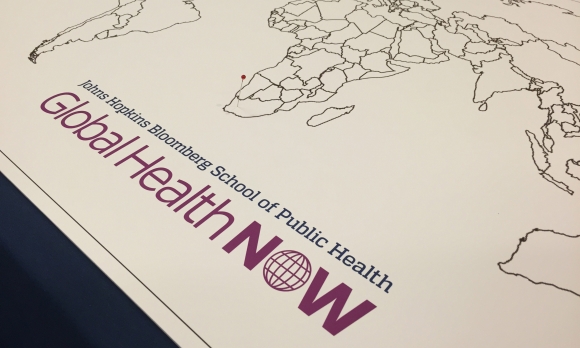
#CUGH2017 Launches (Friday, 4.7.17 at 9.15 a.m.)
In a brief opening plenary session, leaders from the Consortium of Universities for Global Health 2017 conference exhorted 1,700 attendees to redouble their efforts as proposed funding cuts loom over the US global health budget.
“I encourage you to engage more actively than ever before in the ideals and aspirations of global health,” said Nelson Sewankambo, of Makerere University in Uganda and conference co-chair.
The stakes couldn’t be higher, according to Keith Martin, CUGH executive director. “What we are seeing today is biggest threat to the global health enterprise in our lifetime,” Martin said in a stark assessment of the budget cuts and how they could affect NIH, the Fogarty International Center, EPA, USAID, NOAA and other US government agencies.
Martin implored attendees and others in the global health community to act. “In my view, we stand up and fight and we don’t stop until we change this,” he said. He urged people in the US to call their Congressional representatives.
“Calls count. So call not once not twice but call to power of infinity until this changes. Call every week. Ask your networks to call,” Martin said. —BWS
Marking a spot on Global Health NOW's CUGH map

